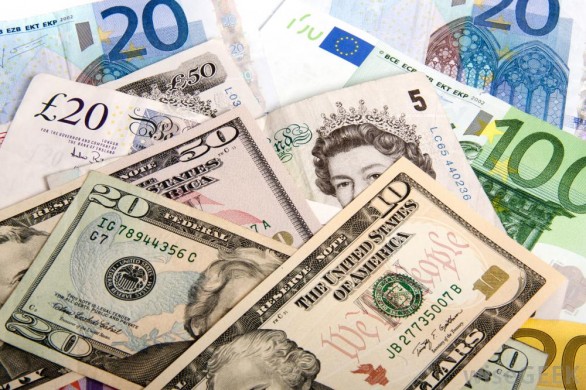Today I’ll examine if N Brown (LSE:BWNG) achieves high returns on tangible assets on a consistent basis. This will be followed by valuations informed by the return on net tangible assets data.
Selected data from the income statements and balance sheets
| £’000s | 2018 | 2017 | 2016 | ||
| INCOME STATEMENT | |||||
| Profit after tax | 12.5 | 44.3 | 54.3 | ||
| Amortisation charge this year for accounting goodwill following acquisitions | 0 | 0 | 0 | ||
| Exceptional items distorting profits (positive or negative) | 46.0 | 20.2 | 7.8 | ||
| Profit for shareholders | 58.5 | 64.5 | 62.1 | ||
| CURRENT ASSETS AND LIABILITIES | |||||
| Inventories | 110.6 | 105.5 | 101.5 | ||
| Receivables | 652.7 | 575.4 | 553.4 | ||
| Cash needed for operations (assumed) | 58.2 | 64.1 | 45.3 | ||
| Other current assets | – | 2.5 | 7.5 | ||
| Payables | -131.7 | -98.9 | -99.7 | ||
| Short-term debt | 0 | 0 | 0 | ||
| Other current liabilities | -9.3 | -13.4 | 0 | ||
| Working capital for operations | 680.5 | 635.2 | 608 | ||
| Surplus cash (assumed) | 0 | 0 | 0 | ||
| NON-CURRENT ASSETS AND LIABILITIES | |||||
| Property, Plant and Equipment | 67.4 | 73.5 | 76.7 | ||
| Goodwill in BS | 0 | 0 | 0 | ||
| Previously written-off acquired goodwill – add back | 0 | 0 | 0 | ||
| Other acquired intangible assets in BS | 0 | 0 | 0 | ||
| Previously written-off other acquired intangibles – add back | 0 | 0 | 0 | ||
| Long-term debt | -405 | -355 | -335 | ||
| Other non-current liabilities | 0 | 0 | 0 | ||
| Net non-current assets for operations | -337.6 | -281.5 | -258.3 | ||
| OTHER ITEMS TO CONSIDER | |||||
| Defined benefit pension deficit | surplus | surplus | surplus | ||
| Internally generated intangible assets capitalised to BS | 156.0 | 141.9 | 124.9 | ||
| Investments (in shares, bonds, etc.) | 0 | 0 | 0 | ||
| Operating lease non-cancellable commitments | 18 | 24 | 26.3 | ||
| Preference share capital | 0 | 0 | 0 | ||
| Minority interests in profit | 0 | 0 | 0 | ||
| Minority interests in net assets | 0 | 0 | 0 |
| £’000s Year end April | 2015 | 2014 | 2013 | 2012 | |||
| INCOME STATEMENT | |||||||
| Profit after tax | 49.4 | 75.9 | 79.4 | ||||
| Amortisation charge this year for accounting goodwill following acquisitions | 0 | 0 | 0 | ||||
| Exceptional items distorting profits (positive or negative) | 17 | -5.6 | 0 | ||||
| Profit for shareholders | 66.4 | 70.3 | 79.4 | ||||
| CURRENT ASSETS AND LIABILITIES | |||||||
| Inventories | 94.8 | 89.9 | 86.5 | 82.6 | |||
| Receivables | 609.9 | 599.0 | 548.7 | 522.0 | |||
| Cash needed for operations (assumed) | 40.4 | 45.3 | 61.3 | 57.5 | |||
| Other current assets | 0 | 0 | 1.2 | 0 | |||
| Payables | -108.9 | -98.0 | -109.7 | -106.6 | |||
| Short-term debt | -7.0 | -9.0 | 0 | 0 | |||
| Other current liabilities | -13.9 | -20.4 | -19.0 | -23.0 | |||
| Working capital for operations | 615.3 | 606.8 | 569.0 | 532.5 | |||
| Surplus cash (assumed) | 0 | 0 | 0 | 0 | |||
| NON-CURRENT ASSETS AND LIABILITIES | |||||||
| Property, Plant and Equipment | 70.5 | 63.2 | 66.4 | 62.8 | |||
| Goodwill in BS | 0 | 0 | 0 | 0 | |||
| Previously written-off acquired goodwill – add back | 0 | 0 | 0 | 0 | |||
| Other acquired intangible assets in BS | 0 | 0 | 0 | 0 | |||
| Previously written-off other acquired intangibles – add back | 0 | 0 | 0 | 0 | |||
| Long-term debt | -280.0 | -250.0 | -250.0 | -250.0 | |||
| Other non-current liabilities | 0 | 0 | 0 | 0 | |||
| Net non-current assets for operations | -209.5 | -186.8 | -183.6 | -187.2 | |||
| OTHER ITEMS TO CONSIDER | |||||||
| Defined benefit pension deficit | 3.3 | 4.2 | 3.3 | 1.0 | |||
| Internally generated intangible assets capitalised to BS | 98.3 | 73.3 | 69.6 | 62.8 | |||
| Investments (in shares, bonds, etc.) | 0 | 0 | 0 | 0 | |||
| Operating lease non-cancellable commitments | 32.1 | 22.3 | 24.3 | 28.9 | |||
| Preference share capital | 0 | 0 | 0 | 0 | |||
| Minority interests in profit | 0 | 0 | 0 | 0 | |||
| Minority interests in net assets | 0 | 0 | 0 | 0 |
I deduct £6m each year for exceptional costs (The directors are in the habit of writing off loses in value for shareholders as exceptional costs – I assume they’ll carry on with this. Thus all the profit numbers below are taken from the table above but with £6m deducted)
Return on net tangible assets, RONTA = Profit for shareholders ÷ Average net tangible assets over the year (beginning BS and end BS averaged).
Return on tangible assets, RONA = Profit for shareholders ÷ Average net assets over the year (includes internally generated intangible assets capitalised)
| £’000s | 2018 | 2017 | 2016 | 2015 | 2014 | 2013 | |||||
| Profit for shareholders | 53 | 59 | 56 | 60 | 63 | 73 | |||||
| Working capital, averaged over year | 656 | 622 | 612 | 611 | 588 | 551 | |||||
| Net non-current assets, averaged | -310 | -270 | -234 | -198 | -185 | -185 | |||||
| Net tangible assets, averaged | 346 | 352 | 378 | 413 | 403 | 366 | |||||
| RONTA | 15.3% | 16.8% |
……………To read the rest of this article, and more like it, subscribe to my premium newsletter Deep Value Shares – click here http://newsletters.advfn.com/deepvalueshares/subscribe-1

 Hot Features
Hot Features












